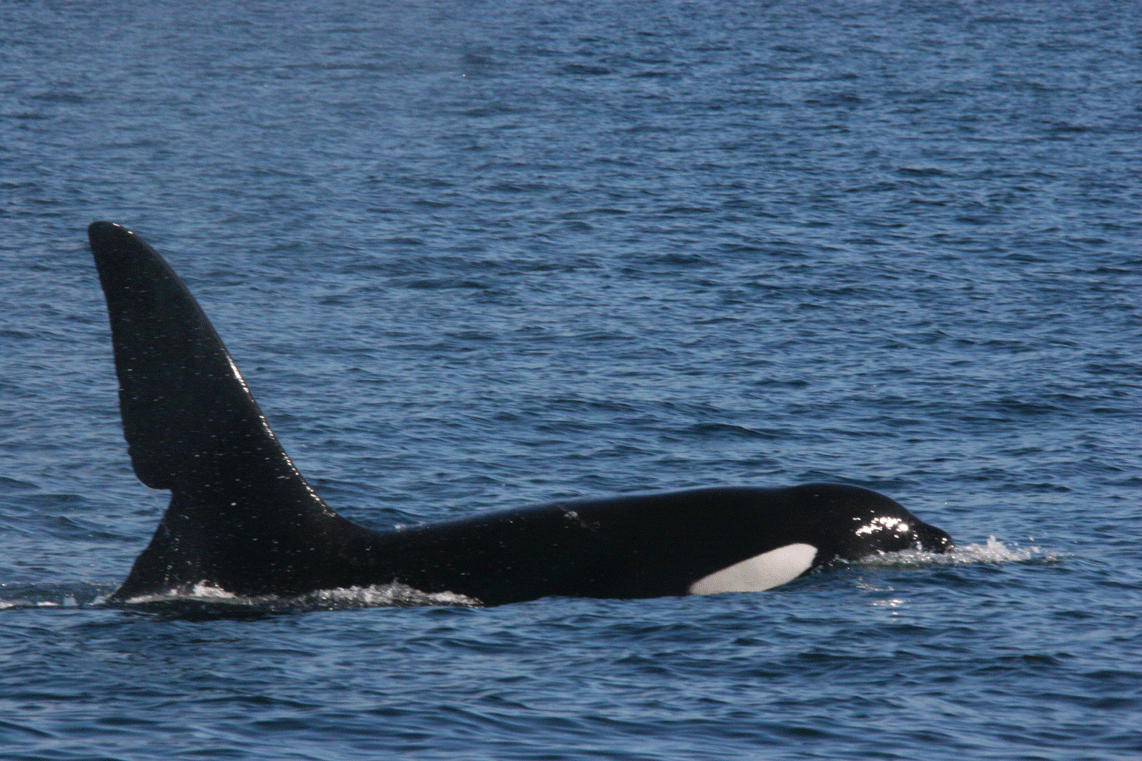FIRST EAST SCOTLAND SIGHTING OF WEST COAST KILLER WHALES
FIRST EAST SCOTLAND SIGHTING OF WEST COAST KILLER WHALES
There has been a confirmed sighting of the West Coast Community of killer whales off Peterhead – the first time members of this small and highly unique population have been reported off Scotland’s east coast.
Video footage of the sighting, by Peterhead man Ian Nash on 20 August 2013, clearly shows a male whale known as ‘John Coe’ – identified by a very distinctive notch in his dorsal fin – along with another male and at least one female.
The Hebridean Whale and Dolphin Trust (HWDT) has been monitoring the movements of this group since the early 1990s, with sightings recorded mainly in the Hebrides as well as off Ireland and Wales. Following this week’s sighting at Peterhead, the charity can now expand significantly the known range of these apex predators.
Mark Hosford, Sightings Officer at the HWDT, said: “This confirmed sighting – the first in two decades of monitoring this important and highly fragile population of killer whales – is a really exciting development. The West Coast Community is thought to be the only resident population of orca in the British Isles, and understanding their behaviour and movements is crucial to the conservation of these remarkable creatures.”
John Coe’s distinctive notch, captured in the Peterhead video footage, allowed Sanna Kuningas of the Sea Mammal Research Unit to recognise the killer whale as part of the West Coast Community and alerted HWDT and Dr Andy Foote, who has extensively studied orca populations in the north east Atlantic as part of the North Atlantic Killer Whale ID (NAKID) project.
The West Coast Community is a unique group of orca in the north-east Atlantic. The entire population is comprised of just five males and four females, and no calves have ever been recorded in the two decades HWDT has been monitoring the group.

Following research conducted by Dr Andy Foote, it was confirmed that the West Coast Community never interact with other populations of the north east Atlantic and are actually morphologically different; having different eye patch orientation to other populations found in the north east Atlantic. It is suspected that this small population prey exclusively on other cetaceans such as porpoise and minke whale. All these variables lead to a distinct and therefore highly vulnerable population of killer whales.
HWDT relies on members of the public to report sightings of cetaceans (whales, dolphins and porpoise) and basking sharks. This enables a better understanding of the marine environment, both locally and in an international context.
Mark Hosford added: “The West Coast Community of orca has a range which includes a large portion of the western coast of the British Isles. This, together with the small number of individuals within the group, means that sightings of the West Coast Community can be few and far between.
“The HWDT research vessel Silurian has a large area to cover and can only be in one place at a time, so having a community-based sightings network allows HWDT to gather much more information on the orca than we could on our own.”
Members of the public who encounter a cetacean or basking shark, can contribute to HWDT’s community sightings network by reporting sightings online at www.hwdt.org
HWDT is dedicated to enhancing knowledge and understanding of Scotland’s whales, dolphins and porpoises and the Hebridean marine environment through education, research and working within local communities as a basis for the lasting conservation of species and habitats.
